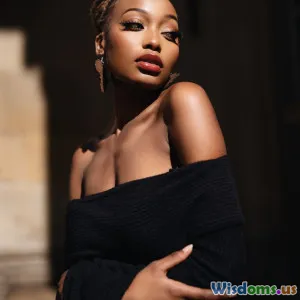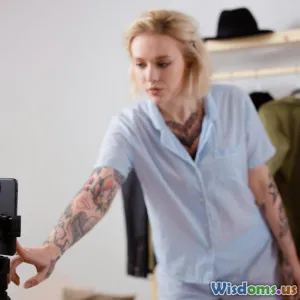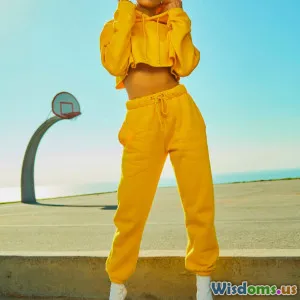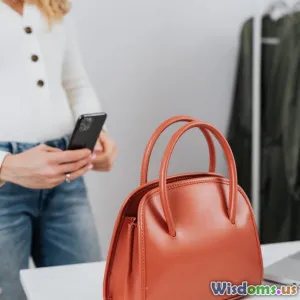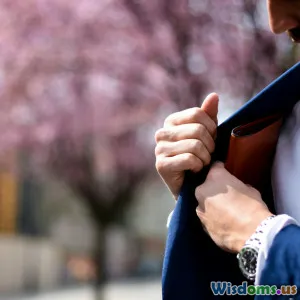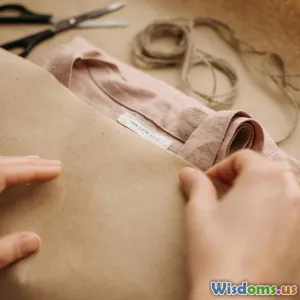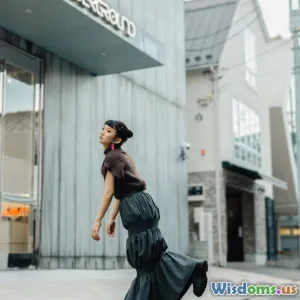
How Blogger Street Style Photography Changed High Fashion Editorials
14 min read Discover how blogger street style photography disrupted and influenced the visual language of high fashion editorials with vivid narratives, democratization, and digital innovation. (0 Reviews)
How Blogger Street Style Photography Changed High Fashion Editorials
Introduction
Imagine flipping through a glossy fashion magazine in 2008: models arch gracefully in orchestrated poses, draped in untouched designer gowns, and settings as aspirational as they are inaccessible. Fast forward a decade, and the narrative looks starkly different. Outrageously stylish individuals stride Brooklyn sidewalks, coffee in hand, snapped mid-laughter—or seizing candid charm amidst the chaos of Paris Fashion Week. High fashion, once an exclusive kingdom, now pulses with the energy and reality of the streets. What changed?
Blogger street style photography, once a rebellion against the polished veneer of traditional fashion, has dramatically reimagined the visual language of high fashion editorials. With digital cameras and unfiltered ambition, young photographers and everyday fashionistas brought real world style and raw authenticity right to the forefront. This seismic shift not only reshaped magazine spreads and luxury campaigns but also redefined who gets to set the trends—and how stories in fashion are told.
This article journeys through the evolution, influence, and legacy of blogger street style photography in high fashion editorials. Along the way, you’ll discover how democratization, authenticity, and digital innovation have not just changed what we see, but how we see it.
The Birth of the Fashion Blogger and Street Style Movement
From the Margins to the Mainstream
At the dawn of the 21st century, fashion insider circles were small and closely guarded. “It” girls and editorial darlings breezed through fashion weeks, trailed by a handful of press photographers. But around the mid-2000s, as digital cameras became accessible and platforms like Blogger and WordPress offered free publishing power, a new generation emerged: the fashion blogger.
Scott Schuman, with “The Sartorialist,” debuted in 2005, cementing a new appetite for fashion outside of the runways. His clean, beautifully honest portraits of everyday (yet extraordinary-looking) people on the streets of New York and later global fashion capitals proved two key things: fashion was everywhere, and anyone could be its muse.
Schuman reflected in an interview with Business of Fashion: "We wanted to show that personal style was democratic; it wasn't just about celebrities and editors, but about the energy coming from the street."
Social Media’s Rocket Fuel
The rise of Instagram in 2010 supercharged the street style revolution. Imagery was instant, viral, and interactive. Bloggers and influencers like Susie Bubble and Bryanboy documented daily outfits from their own perspectives, blurring lines between subject and photographer.
Candid, authentically shot outfits replaced the overly curated editorial spread as the aspirational touchstone. By 2012, street style photos at Fashion Month events started drawing millions of online views, eclipsing even runway reporting for engagement.
Blogger Street Style versus Traditional Editorial: A New Visual Grammar
The Editorial Evolution
Traditional high fashion editorials were built on meticulous planning: art directors, stylists, lighting setups, and controlled environments. The result? Immaculately staged images projecting fantasy and exclusivity.
Street style photography, by contrast, favored spontaneity over scripting: unpredictable weather, bustling crowds, and happenstance encounters. Clothes moved, creased, and glowed differently. Authenticity replaced unattainability.
Example: In 2018, legendary stylist Grace Coddington commented to Vogue: “Street style brought energy back into fashion imagery. Real people making high fashion look relevant—outside of perfectly controlled studio spaces.”
Democratization and Diversity
Where magazine shoots once featured a select few models (primarily white, cis-gendered, sample-size), street style photographers cast an infinitely wider net. Well-dressed individuals of all shapes, backgrounds, and ages became fashion icons. This inclusivity echoed a broader societal call for diversity and resonated deeply with audiences looking for self-representation.
A 2016 Harper’s Bazaar survey found readers were 42% more likely to engage with editorial images inspired by street style compared to traditional editorials featuring celebrity models.
Blurring Roles: Photographers, Stylists, Subjects
Street style created new roles—fashion bloggers curated looks, photographed content, and become mini-brands. Photographers like Tommy Ton and Phil Oh captured not just the clothing but really the energy and personality behind each look. In essence:
- Bloggers became editors: Deciding what stories needed telling.
- Readers became muses: Everyday readers started their own blogs or Instagram accounts, entering the conversation.
- Personalities became influencers: The term “influencer” was born from the merger of style icon, content creator, and brand ambassador.
How Street Style Changed High Fashion Editorials
1. From Fantasy to Relatability
Gone were the days when editorials depicted untouchable decadence inaccessible to the average reader. Now, the case was different: you might see a Parisian student outside the Tuileries wearing thrifted vintage with designer boots—a style entirely attainable and sparking ideas for how to remix your own closet.
Case in point:
- Vogue Paris’s 2017 “My City, My Style” editorial—shot entirely on city streets and modeled by locals and influencers—became the magazine’s best-performing digital spread of the year for online shares and engagement.
2. Redefining Luxury and Authenticity
Luxury brands like Gucci and Balenciaga swiftly adapted. Their campaigns started echoing street style’s dynamism, using real locations and multi-hyphenate personalities rather than just professional models. One striking example: Gucci’s 2018 campaign was composed only of street-cast individuals and non-models discovered through Instagram.
Quotes from Alessandro Michele, Gucci’s creative director, summarized this shift:
“The new luxury is truth—the beauty of self-expression in the world around us.”
3. Accelerating Trends with Digital Momentum
Street style images become instant trend barometers. Items spotted during Milan or London Fashion Weeks—like micro sunglasses, oversized coats, or unique sneakers—went viral within hours, propelling niche trends into global demand overnight. Editorials began to chase these micro-trends for shoots, closing the loop between the street and the printed page.
According to a 2019 Lyst Report, products that appeared frequently in street style posts saw up to a 275% spike in searches within two weeks—far outpacing those featured primarily in runway shows or ads.
Case Studies: Street Style’s Editorial Triumphs
Tommy Ton and the Rise of Digital Editorials
Tommy Ton, once dismissed as a “backstage” shooter, now commands features in publications from The New York Times to Vogue. His kinetic shots—bright, lively, and fiercely individual—are uniquely responsible for a new editorial energy that mimics the vibrancy of Fashion Week itself.
In 2015, The New York Times devoted its entire Fashion Week coverage to Tommy Ton’s lens, resulting in record reader engagement and new subscription sign-ups.
Social Media Influencers: The New Cover Stars
In 2019, Elle UK made headlines when they chose Chiara Ferragni, Italy’s most famous fashion blogger-turned-entrepreneur, as their cover subject, styled as herself on Milanese streets. Print sales soared, and digital impressions climbed by almost 300% compared to the previous issue, proving the magnetic draw of street style personalities.
LVMH and the Rise of Diversity
Luxury conglomerate LVMH acknowledged the influence of street style by integrating “real people” narratives in campaigns and lookbooks. The 2020 Louis Vuitton Spring campaign highlighted creative talents from the worlds of music, skateboarding, and activism—all initially discovered through street style blogs and social media. This pivot brought a younger and more diverse audience into the high fashion fold.
Technology: Enablers and Accelerators
Instant Access, Endless Inspiration
Mobile photography, Wi-Fi-enabled cameras, and editing apps like VSCO or Snapseed democratized not just content creation, but its quality. Bloggers could quickly shoot, edit, and publish editorial-caliber images in minutes—no traditional gatekeepers required.
Example: A 2021 survey by Digital Camera World reported that over 80% of influential street style content during European Fashion Weeks was shot and processed entirely on smartphones.
AR, AI, and Next-Gen Editorials
The integration of AI-powered analytics helped brands spot microtrends in real time, translating viral street moments into curated editorial features or new capsule collections. Augmented reality now allows digital try-ons inspired by Blogger looks, further blurring the lines between street inspiration and commercial editorial.
Challenges and Critiques: Has Street Style Lost Its Edge?
Oversaturation and Homogenization
What made blogger street style so disruptive was its unpredictability. Yet, with increasing commercialization, many critics argue that the aesthetic has become formulaic—Instagram feeds jammed with similar shots, angles, and “must-have” items. In the words of Suzy Menkes, former International Herald Tribune fashion editor:
“Street style, once raw and truly personal, risks becoming its own kind of uniform.”
Industry’s Response
High fashion editorial teams now rotate between raw street-inspired and avant-garde fantasy, searching for a new magic formula. Some editorial teams offer behind-the-scenes content or cast non-professional creatives for genuine spontaneity.
Despite critiques, the essential disruption remains: street style made editors, brands, and consumers more attuned to resonance over perfection, storytelling over iconography.
The Lasting Impact: Democratization and New Narratives
Perhaps the greatest legacy of blogger street style is the opening of fashion editorial to new stories:
- Democratization: Editorial pages once reserved for supermodels are now accessible to a global talent pool. Anyone with unique style and a digital platform can attract attention and shape trends.
- Diversity & Inclusion: The diversity of bodies, cultures, and backgrounds reflected on the streets is increasingly mirrored in the editorial canon—a crucial adjustment for a global, connected audience.
- Dynamic Storytelling: Editorials now capture the whirlwind motion of life, not just perfectly still fantasy. They reflect a world in dialogue, not just a dictation of style from atop.
As trend forecaster Li Edelkoort summarized in 2022:
“Street style made fashion something we can all truly participate in. Editors, photographers, even the brands themselves—are no longer gatekeepers, but storytellers joined by millions.”
Conclusion
Blogger street style photography’s impact on high fashion editorials is both profound and enduring. By championing spontaneity, authenticity, and inclusivity, it redefined how luxury is portrayed and perceived. What began by amateurs on digital street corners now dictates the mood boards of major publications and luxury houses, sparking endless cycles of inspiration: from sidewalk to glossy spread and back again.
In 2024 and beyond, expect further blurring—as technology, new voices, and ever-fresh narratives continue to reshape the way high fashion is seen, shared, and celebrated.
So, the next time you see an eye-catching ensemble in an editorial—ask yourself: Was this inspiration born in a studio, or on streets alive with real style and real stories?
Rate the Post
User Reviews
Popular Posts










